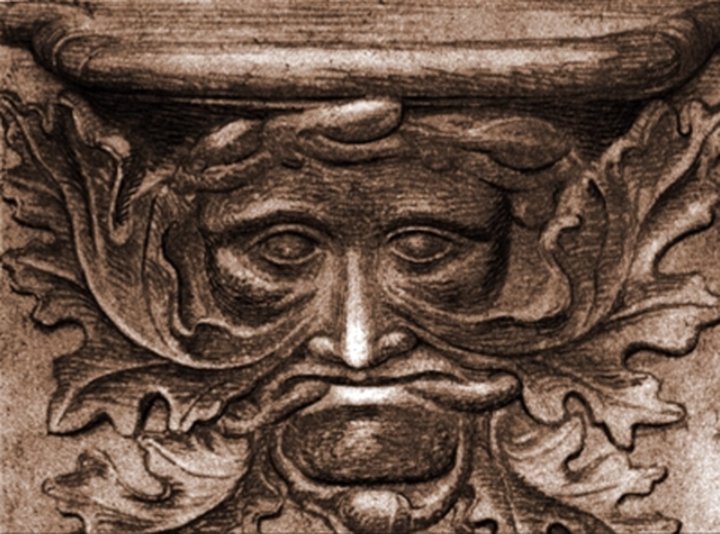Found in many cultures from many ages around the world, the Green Man is often related to natural vegetative deities. It is primarily interpreted as a symbol of rebirth, representing the cycle of growth each spring. (Wikipedia)

A medieval Green Man stares down from the ceiling of Rochester Cathedral, just up the road from my hometown in Kent, England. (Akoliasnikoff, Creative Commons)
“See you at The Green Man!” we’d say, planning to get together for a couple of pints when we were in central London. That was in my student days, yea many moons ago, and no one had to check exactly where the rendezvous was: Berwick Street, Soho, heart of it all, close to Ronnie Scott’s Jazz Club and to most of the London theatres, where you could pay four shillings (50 cents back then) to stand in the back. Them good old days.
I was reminded of this last week after we’d cycled to the remote village of Richis in Transylvania, Romania. An enthusiastic Dutch woman—long story—was showing us around the 14th century church (once a Cistercian monastery). “And here’s an odd carving,” she said, pointing up to a time-worn face in an arch next to the nave. There he was, the Green Man, in all his leafiness. What was he doing here, I wondered, a pagan figure carved 700 years ago in an obscure Catholic church?

(Barry Evans)
Not so strange, it turns out. The Green Man crops up everywhere, symbolizing growth and rebirth, usually wreathed in vegetation, especially ivy. Dozens of English pubs—not just in Soho—go by that name. Here he is at the very heart of the 4th century Great Dish, part of the Mildenhall silver hoard now in the British Museum, portrayed more as a sea god than a nature god.

(JMiall, Creative Commons)
Fans of the King Arthur sagas will recognize the Green Man motif in the late addition (14th century) to Arthurian legends, “Sir Gawain and the Green Knight.” In this Welsh-Irish-French derived romance, Sir Gawain is mentored by the Green Man, in the form of the Green Knight, in Gawain’s quest to retain his honor while faced with some difficult—to say the least!—challenges.
Much more recently, in the final chapter of my beloved childhood book The Wind in the Willows by Kenneth Grahame, “The Piper at the Gates of Dawn” (early Pink Floyd anyone?), Mole and Ratty meet a Pan-like Green Man figure. Only to have “the kindly demi-god” bestow on them his “last best gift”: the gift of forgetfulness “in order that they should be happy and light-hearted as before.”
This is a lovely medieval Green Man, this time in Vendôme (central France) Abbey:

FN 177-4 Scan of etching (Simon Garbutt, Creative Commons)
I’ve barely scratched the surface. Are the Ents in Tolkien’s Lord of the Rings embodiments of Green Men? How about Alan Moore’s Swamp Thing? Rosslyn Chapel in Scotland, critical to the plot of The Da Vinci Code, features over 100 Green Man carvings. And all this is just in Europe: some scholars have identified “our” Green Man with Egyptian Osiris, Aztec Tlaloc (god of rain), and “gana Kirtimukha” (“gana” is cognate with “green”) in both Hindu and Buddhist mythology. Carl Jung with his archetypes would have a field day.

Multiple Tlaloc carvings, Kabah, western Yucatan, Mexico (Barry Evans)
Time for a cuppa tea. Green, of course.
CLICK TO MANAGE